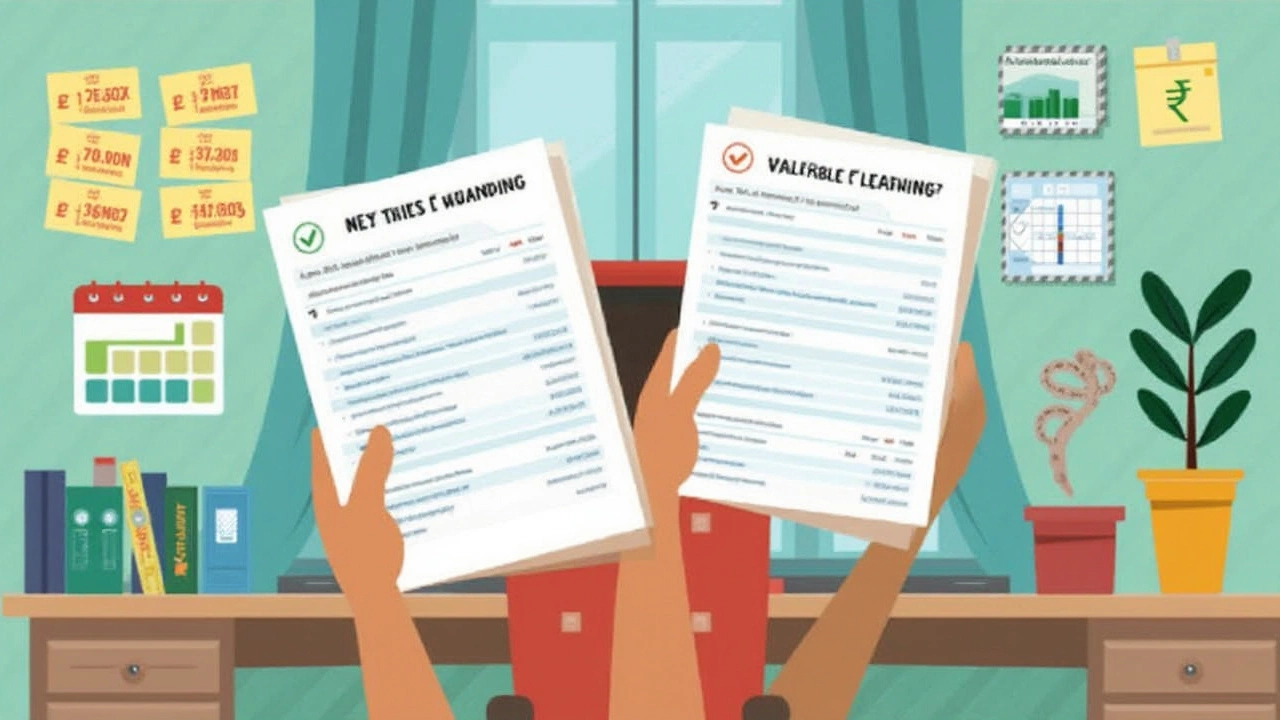Ever wondered where you can actually make the most money teaching online? With platforms like Udemy, Skillshare, and Coursera popping up everywhere, the money side can get confusing fast. Some sites take a big chunk of your earnings, others promise more, but have hidden conditions. If you’re thinking about putting your knowledge out there, it’s smart to know who pays best before jumping in.
Let’s get honest—no two platforms play by the same rules. Udemy might shout about millions of students, but they often take 50% (or more) if they market your course for you. Skillshare pays by watch time, not course sales, so your topics need to really grab attention. Even Coursera can change things up, offering a fixed fee or a cut depending on the school or partner you work with.
This matters more than it seems. If you’re pouring hours into lesson creation, lesson planning, and student engagement, every bit you earn counts. The good news? With the right info and some tactical moves, you can pick a platform that matches your style and financial goals. Knowing these details upfront saves a lot of frustration down the road.
- How Pay Structures Work on Different Platforms
- Top Platforms: What They Really Pay Instructors
- Unpacking Fees, Commissions, and Payouts
- Factors That Boost (or Shrink) Your Earnings
- Practical Ways to Maximize Your Profits
How Pay Structures Work on Different Platforms
If you're chasing the highest payout as a course creator, you need to know how each e-learning platform slices up the money. The way you get paid can be totally different from one site to the next, even if you're teaching the same material.
Udemy is all about a revenue share model. If a student buys your course with your promo link, you get up to 97% of the sale. Sounds great, right? But here's the catch: if Udemy itself brings in the customer, you usually get 37% to 50%, depending on promotions. They handle discounts a lot, which can shrink your earnings fast. You get paid each month, after a 30-day refund window.
Skillshare takes another approach. You don’t make money from course sales; instead, you get paid for minutes watched. Every month, Skillshare splits a big royalty pool among all teachers, based on their share of total watch time. So if your courses are binge-worthy, you could do well. But if you’re in a niche with fewer students, earnings can feel low. They also toss in small bonuses for getting new students to sign up with your link.
Coursera is a different beast. If you work with them directly (usually as an industry expert or university partner), you might get either a flat fee for the course or a share of the revenue, often after negotiating a contract. Some instructors have reported getting 15% to 20% of net sales, but this varies a lot and is less transparent than other sites.
Teachable and Thinkific let you set your own price and keep around 90% of the sale (after payment processing fees) if you bring in students yourself. You handle all the marketing and customer relationships, but you get to keep a bigger cut. This model favors creators who already have a following or are willing to hustle for sales.
Here's a quick side-by-side of common payout setups to help you compare:
| Platform | Payment Method | Typical Instructor Share |
|---|---|---|
| Udemy | Revenue share | 37%–97% |
| Skillshare | Royalty pool (watch time) | Varies (average $0.05–$0.10 per minute watched) |
| Coursera | Flat fee or share | Often 15%–20% of net |
| Teachable/Thinkific | Direct sales | ~90% (after fees) |
If you’re thinking about where your course might thrive, keep these teaching online payout models in mind. The one with the friendliest pay structure for your situation will help you earn the most without unwanted surprises.
Top Platforms: What They Really Pay Instructors
If you want to make money on e-learning platforms, the fine print matters more than any fancy marketing pitch. Let’s break down the real numbers from the most popular options so you know exactly what’s possible—and where you might get the shortest end of the stick.
Udemy is probably the first name people think of. Their pay structure is a bit of a minefield. If a student buys a course using your coupon or referral link, you usually keep 97% of the revenue (after PayPal or bank fees). But if Udemy brings in a student through their own marketing or ad campaigns, you’ll pocket about 37%. If it’s a sale made through Udemy’s business partnerships, the split can be different, sometimes even less. Most instructors report monthly payouts, but the numbers depend wildly on how you promote your course. Bottom line: you mostly get what you hustle for on Udemy.
Skillshare flips the script. Here you make money from minutes watched—yep, everything depends on learners actually finishing your class videos. Each month, 30% of Skillshare’s Premium Membership revenue is split between all teachers based on their share of watch minutes. There’s also a $10 bonus if someone signs up for Premium using your referral. On average, top teachers report earning around $1,000–$5,000+ a month, but new folks usually see much less unless they teach something really in demand.
Coursera and edX tend to favor those who partner with universities or big institutions, rather than individual teachers setting up solo online courses. Revenue is usually shared as a fixed amount per enrollment or as a split (sometimes 50/50) with your university or company. For individuals, opportunities to offer independent classes are rare, and payouts aren’t transparent. If you’re with the right institution, though, payments can be substantial per class, often in the thousands per cohort.
Teachable and Thinkific are where you call the shots. Both let you set your price and keep up to 100% of your course earnings after their small payment processing fees (2.9% + 30 cents per sale on the cheapest plans, for example). There’s a monthly flat fee for using their platforms, but you own your relationship with students and control your pricing, marketing, and messaging. If you have an audience or know how to drive traffic to your course, these can be the highest-paying options, hands-down.
Below is a quick comparison table to make the numbers clearer:
| Platform | Main Pay Model | Common Instructor Earnings |
|---|---|---|
| Udemy | Revenue share (up to 97% with referral, 37% via Udemy sales) | $1–$10 per student for non-referrals |
| Skillshare | Minutes watched/royalty pool | $0.05–$0.10 per minute watched, varied by month |
| Coursera | Partner revenue share or fixed fee | $2,000+ per institution course, rare for individuals |
| Teachable/Thinkific | You set price, keep up to 100% minus fees | Varies—top instructors earn $10,000+/mo with big audiences |
When you compare instructor earnings, your best shot at making real income isn’t always the flashiest platform. It’s about understanding what you want: fast cash, big volume, or total control over your brand. Each site is different, so pick the one that fits how you like to work—and how much you want to earn.

Unpacking Fees, Commissions, and Payouts
If you’re after the biggest paycheck, don’t ignore the fine print around fees and commissions. Every e-learning platform has its own recipe, and the difference shows up in your payouts.
Take Udemy. If you drive a sale yourself using a coupon or referral link, you grab 97% of the revenue. But if Udemy gets the customer for you, they’ll take a 63% slice, leaving you with just 37%. There’s also the Udemy for Business model—courses included in this program pay via a big royalty pool that gets split up based on total minutes watched. That means you can snag passive monthly income, but it’s less predictable.
Skillshare goes a completely different route. They don’t pay by course sale. Instead, teachers pocket a piece of Skillshare’s Premium Membership revenue, based on how many minutes premium students watch your content. Rates change every month, but on average, most teachers earn around $0.05–$0.10 per minute watched by premium members. You’ll also get paid for new student referrals—usually $10 to $30 per sign-up, which can stack up if you promote well.
Coursera feels more like a traditional partner. If you create a course with one of their partner schools, you might get a fixed fee or a revenue share—usually between 15% and 20% after transaction fees. Keep in mind, you can’t just upload a course as an individual; Coursera is pretty exclusive.
If you want the most control, Teachable and Thinkific let you set your own price, but you pay a subscription fee ($39/month for the basics), plus roughly 5% per transaction unless you’re on a higher plan. That’s way more predictable, but you’re also on the hook for all the marketing and support.
- Payout schedules vary: Udemy pays monthly with a 30+ day delay for refund windows. Skillshare pays around the 16th of the month for the previous month. Teachable and Thinkific usually pay monthly or on demand, but only after deducting processing.
- Watch for platform-specific fees: Skillshare has no upfront charge, but platforms like Teachable and Thinkific hit you with subscription fees, even if you sell nothing.
- International transfer fees: If you’re outside the U.S., sites may deduct extra for PayPal or wire transfers without warning you upfront. Always double-check before counting those dollars.
| Platform | How You Get Paid | Main Fees | Payout Schedule |
|---|---|---|---|
| Udemy | Per course sale (percentage varies) | 63% fee on Udemy-driven sales | Monthly (30-day refund delay) |
| Skillshare | Per premium minutes watched + referrals | None, but share split with all instructors | Monthly (around 16th) |
| Coursera | Fixed or revenue share if partner | 15-20% typical share after fees | Monthly (if eligible) |
| Teachable/Thinkific | You set price, collect sales | Subscription fee + 5% (entry plans) | Monthly or on demand |
If you want the most money for your time, do the math for your expected student numbers, and don’t forget to factor in these hidden costs. Sometimes the site with the lowest headline fee leaves you with less, once you add it all up. Picking the right payout model for your online courses can make a big difference in your bottom line.
Factors That Boost (or Shrink) Your Earnings
What makes one course pull in solid bucks, while another kind of fizzles? When it comes to e-learning platforms, your money isn’t just about being a good teacher. Let's talk real-world contributing factors:
- Audience Demand: If you’re teaching Python or digital marketing, you’ll see way more traffic than an obscure topic. High-demand subjects straight up mean more eyeballs—and that equals higher earnings.
- Platform Promotion: Some sites push your course front and center, but they’ll take a bigger cut (hello, Udemy's 50%). If most students find you through platform ads or promos, expect smaller payouts per sale.
- How You Bring in Students: On Udemy, if a learner buys using your promo code, you keep up to 97% of the sale. If the platform makes the sale, your share drops—sometimes to as low as 25%. On Skillshare, it’s all about the minutes watched, so engaging lessons matter more than launch day sales.
- Competition and Niche: Tough crowd? More competitors = lower average prices. Find a unique twist or angle. Niche courses with little competition can actually pay better than generic topics swamped with creators.
- Course Quality & Engagement: Top-rated, well-produced courses get better placement, reviews, and return students. Quality matters more than quantity—shaky audio and dated slides will hurt you.
- Country of Audience: Platforms often price courses cheaper in lower-income countries. So, if most of your traffic is from the US or UK, you’ll usually see higher revenue per sale.
Here’s how pay can shake out on popular teaching online sites, for a real-world sense of these factors:
| Platform | Typical Instructor Share | Main Earning Factor |
|---|---|---|
| Udemy | 25%-97% | Who drives the sale (you or Udemy) |
| Skillshare | Pro-rata (pool) | Total watch minutes + referrals |
| Coursera | Varies (often % or flat) | Negotiated deal |
Watch for changes. Platforms update their models often. Last year, Skillshare dropped their royalty pool by 20% overnight. That stung a lot of creators. Stay in the loop by checking official updates or joining creator forums to keep tabs on changes affecting your income.
Quick tips if you want to boost your instructor earnings: market directly to your network, update courses often, keep your quality sharp, and seriously consider adding a personal website or email list. You’ll be less at the mercy of sudden platform changes.

Practical Ways to Maximize Your Profits
If you want to make the most out of e-learning platforms, it’s not just about uploading a course and waiting for the payouts. Getting real results means working a few smart angles that many instructors skip.
First, know your payout rules. Udemy, for example, gives you 97% of the revenue from course sales if you bring in the student yourself, but only 37% if they come through Udemy’s own promotions. Skillshare’s royalty pool pays per minute watched, so a longer, binge-worthy course can seriously boost your income. According to Skillshare’s own stats, teachers making "three or more courses often see over $2,000 a month" (Skillshare Official Teacher Stats, April 2024).
"Your earnings aren’t set in stone. You control your income with engagement, updates, and self-promotion." — Sarah Cordiner, Education Business Strategist
Promote your courses yourself wherever possible. Share on your socials, start an email newsletter, or drop a sneak peek on YouTube. When students sign up through your referral, you keep more (sometimes almost all) of the revenue. That’s money straight into your pocket instead of split with the platform.
Don’t forget to pick the right topics. Some niches are just flooded — anything with Photoshop or generic productivity tips is a tough crowd. But niche skills, like "Excel for engineers" or "Beginner’s Korean for travelers," can help you stand out and charge more.
- Reply to student questions fast—courses with higher engagement get more visibility in search.
- Refresh lessons, add bonus content, or launch small mini-courses to ride new trends.
- Ask students for (honest) reviews — good ratings shoot you up the e-learning platform rankings.
- Bundle your courses so learners buy more than one at a time.
It’s worth tracking actual numbers. Here’s a quick example of instructor earnings on top platforms from late 2024:
| Platform | Main Pay Model | Typical Monthly Earnings* |
|---|---|---|
| Udemy | Sales/revenue share | $50–$4,500 |
| Skillshare | Royalty pool (minutes watched) | $600–$2,300 |
| Teachable | Direct sales (you own your course) | $1,000+ |
*Based on teacher community reports, full-time instructors with three or more active courses.
Bottom line: Most people who really cash in don’t just set and forget. They hustle on marketing, stay active with their audience, and keep their course content fresh. That’s what sets high earners apart.





